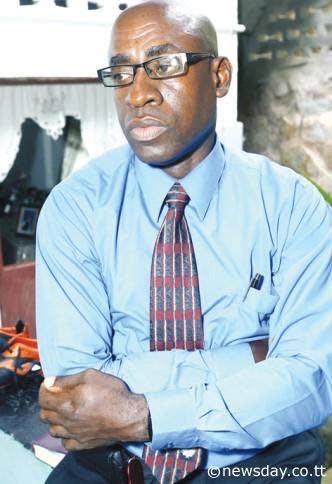“Contrary to what [Richard] Fakoory said, his company, Superstar, actually came on board at Rangers in the mid-1980s.
“[…] We in St Ann’s are very much concerned with the decision to move St Ann’s Rangers to La Horquetta. Who gave Mr Fakoory the rights to sell St Ann’s Rangers? What is the cost involved and how do the people of St Ann’s benefit from this move?”
In the following Letter to the Editor, former Strike Squad captain and Trinidad and Tobago National Futsal Team head coach Clayton “JB” Morris voices concern about Richard Fakoory’s sale of St Ann’s Rangers, which will now move base to La Horquetta:
Dear Sir/Madam,
My name is Clayton Morris and I am a former National and Rangers football player, who was asked to represent the former players of the community of St Ann’s on the sale of St Ann’s Rangers by Richard Fakoory, interim chairman of the Pro League, to Richard Ferguson and pest control company, Terminix Trinidad—due to the lack of support from businesses in St Ann’s.
Fakoory told Wired868 that he started in football with the Rangers youth teams between 1978-1980.
Rangers FC was actually founded way back in 1972. At the time, the main team in St Ann’s was West Ham. The younger players from the area, who couldn’t compete with the senior players for a spot on West Ham, would compete against each other annually as either ‘Hill Boys’ or ‘Valley Boys’ for cases of drinks.
Eventually, those young men decided to form their own team, which was coached by Ronald Alexis and organised by Oscar ‘Buggy’ Haynes, Jeffrey ‘Beppe’ Sample, Ian ‘Hardy’ Morris, Ronald ‘Eggs’ Alexis and Stanley ‘Popo’ Tindale, who were the real founders and owners of Rangers.
Rangers produced under-13, under-15, under-17 and under-19 teams during that period and I captained them all. We dominated those age groups in the North Zone Football Association.
Players at the club would purchase their own uniforms—which were red tee-shirts, dark blue pants and red socks—and print them themselves. This went on all the way to senior level. The only time we got assistance with uniforms was when we represented Defence Force in the North Zone’s Under-19 Division, as the Defence Force Youths.
Contrary to what Fakoory said, his company, Superstar, actually came on board at Rangers in the mid-1980s. Wendell “Tractor” Belgrave—the late father of Trinidad and Tobago Women’s National Senior Team defender Ria Belgrave and Pro League stand-outs Josimar Belgrave and Elijah Belgrave—invited Richard Fakoory to a club meeting where he was said to be impressed with the way Rangers organised themselves despite the lack of funding.
Superstar came on board soon after and the club became known as ‘Superstar Rangers’.
This partnership boosted the players’ moral and motivated the community. The question of financial support from businesses within the St Ann’s community was not an issue then as Superstar was in control, as title sponsor.
A few years ago, we were told that the Superstar name was dropped from the team as Pro League teams were asked to be associated with their communities and one of the criteria for government funding was that teams had to be unsponsored. So the club became St Ann’s Rangers.
In recent times, Rangers have struggled to get proper training and playing facilities which forced sessions to be held at the Queen’s Park Savannah. Talented youths from the St Ann’s community were demotivated by this move—they felt the ‘vibes’ around the side had gone—and the result eventually became a Rangers team that was almost totally filled with ‘outsiders’.
We in St Ann’s are very much concerned with the decision to move St Ann’s Rangers to La Horquetta. Who gave Mr Fakoory the rights to sell St Ann’s Rangers? What is the cost involved and how do the people of St Ann’s benefit from this move?
I have over twenty years working experience as a corporate communication assistant at Petrotrin, which sponsored various community sports and cultural groups. When we sponsored the Phase II Pan Groove, it was the Petrotrin Phase II Pan Groove; but when the contract ended, Petrotrin moved on and Phase II Pan Groove kept its name.
So how is it that a sponsor—Fakoory’s Superstar—became seen as the owner of the club it came on board with, as happened with Rangers? How can Fakoory sell something he never bought in the first place?
What will become of the St Ann’s youths whose passion is to become a Trinidad and Tobago national player like Sheldon Bateau, Belgrave or myself?
We, the former members/players of the community of St Ann’s who were provided the grand opportunity to excel by Rangers FC, hope and pray that some consideration be given towards the continued development of the youths of our community.

